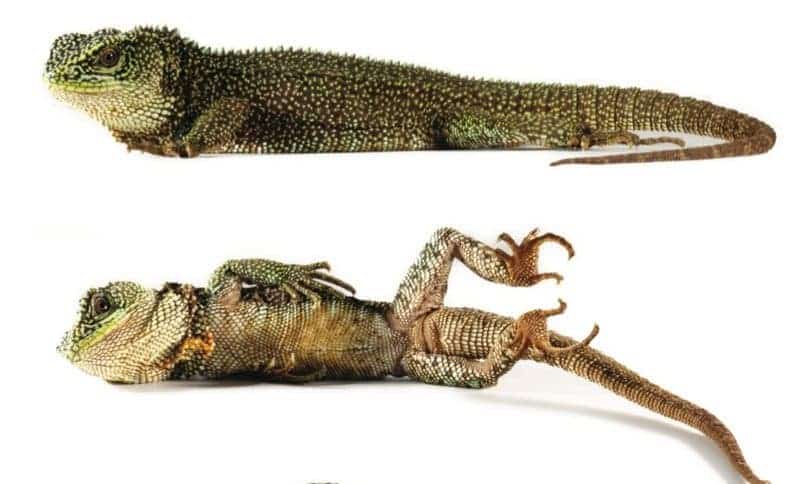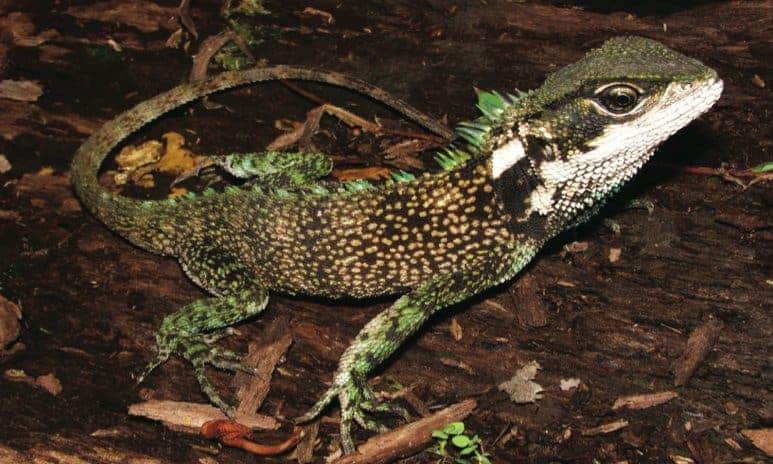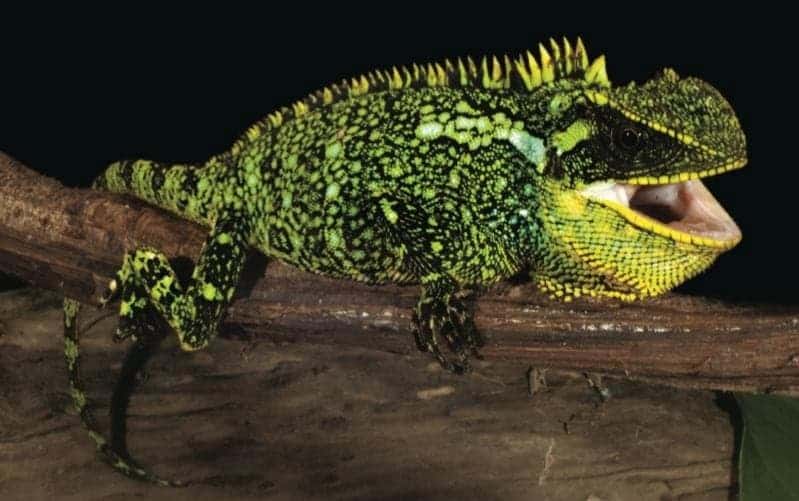Some areas of South America are so special and magical… that you might even find a dragon – or actually, three of them! Tiny dragons, that is, but still, it’s something. Postdoc Omar Torres-Carvajal discovered three new species of dwarf dragons in the Andes of Peru and Ecuador.

The newly discovered rough-scaled woodlizard has a more traditional dragonesque look. (Torres-Carvajal et al.)
If you look at them, it’s easy to see where they got their name. Also called wood-lizards, these dragons have much in common with their mythological namesakes – except they’re tiny. When Omar started his post-doc, only a few dwarf dragons were known; they were thought to be one of the least diverse species of lizards in South America and in the world.
“During the last few years we doubled the number of known species of wood lizards, showing that the diversity of these conspicuous reptiles had been underestimated,” he said. “That more than half of the diversity of a group of large, dragon-looking reptiles from South America has been discovered in recent years should be heard by people in charge of conservation and funding agencies.”
Over the past years, he and his colleagues managed to discover seven new species in Ecuador and Peru – and now they found three more. There will also be likely more to follow.
“Woodlizards are fairly large and conspicuous, so it’s interesting that roughly half of the currently recognized species have been discovered in the last 10 years,” Kevin de Queiroz, Torres-Carvajal’s supervisor at the Smithsonian’s National Museum of Natural History, said in an email. “This illustrates how much we still have to learn about South American reptiles.”
Enyalioides altotambo, Enyalioides anisolepis and Enyalioides sophiarothschildae were discovered in an area often called the “biodiversity center of the world”. There are over 20,000 plant species found nowhere else in the world, and at least 1,500 species of vertebrates in the same situation – and there’s likely many other discoveries we’ve yet to make.
Enyalioides anisolepis, the rough-scaled woodlizard, seems to enjoy forest slopes, running around in the trees. E. anisolepis looks a lot like a mythological dragon, covered in threatening stud-like scales that point outwards. This species comes in several color variations, from black and bright green to brown to burnt orange. Enyalioides sophiarothschildae, the Rothschild’s woodlizard has a slender appearance with bright green spikes. Its most characteristic feature is its “immaculate white labials and chin”. While all these species have different features, researchers wanted to make sure they’re different species, so they conducted DNA analysis, which confirmed what biologists believed.

The Rothschild’s wood lizard, whose green spikes distinguish it from its peers. (Torres-Carvajal et al.)
It just makes you wonder how many other species still await to be discovered – and how many will be vanquished before we even have a chance to discover them.
Journal Reference: Omar Torres-Carvajal, Pablo J. Venegas, Kevin de Queiroz. Three new species of woodlizards (Hoplocercinae, Enyalioides) from northwestern South America. doi: 10.3897/zookeys.494.8903










